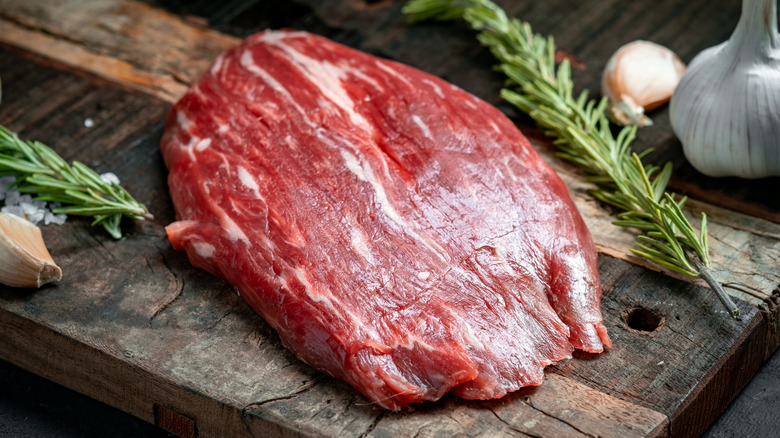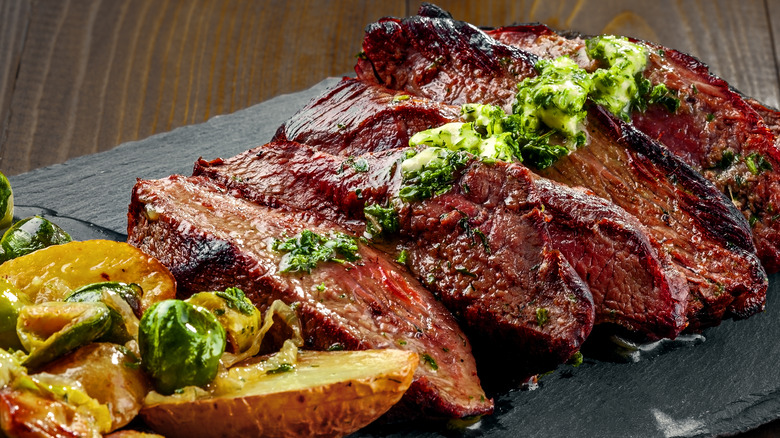The Real Difference Between Flank Steak And Hanger Steak
What's in a name? That which we call a steak, by any other name would smell as sweet. Wait, that's not how that Shakespeare line goes. But many do believe that steak is great no matter what word comes before it, and they aren't totally wrong. But, there are some key differences between flank steak and hanger steak. Let's take a look.
Flank steak is cut from the lower chest or abdomen of a cow. It's a "flat" steak, which cooks much faster than a thick-cut steak and is great on a hot grill. Flank steak is commonly used in Mexican fajitas and Chinese stir-fry recipes because it soaks up marinades easily and cooks quickly. Hanger steak "hangs" from the diaphragm of the cow, under its lower belly. It's also flat, like a flank steak, and tender and juicy like a filet (via Thrillist). So, what makes these two cuts different?
The biggest differences between flank steak and hanger steak
We know that flank and hanger steaks can both soak up marinades and cook quickly on a hot grill. They also both contain muscle fibers that can result in a tough steak if overcooked. It's because of this that you'll want to slice against the grain to avoid chewing your steak all night.
So, why would you want to choose one cut of beef over the other? It comes down to preference and recipe at the end of the day. When you think of a fancy London Broil, flank steak is traditionally used. Flank steak is also good for recipes that call for "stuffing" or "rolling" a steak. Hanger steaks used to be kept by the butcher since no one seemed to want the tougher muscle meat, but its popularity has grown due to lower price and high beef flavor. As long as you have a good marinade and a hot cooking surface, you can save money and get loads of flavor out of either of these less-common flat steaks.

